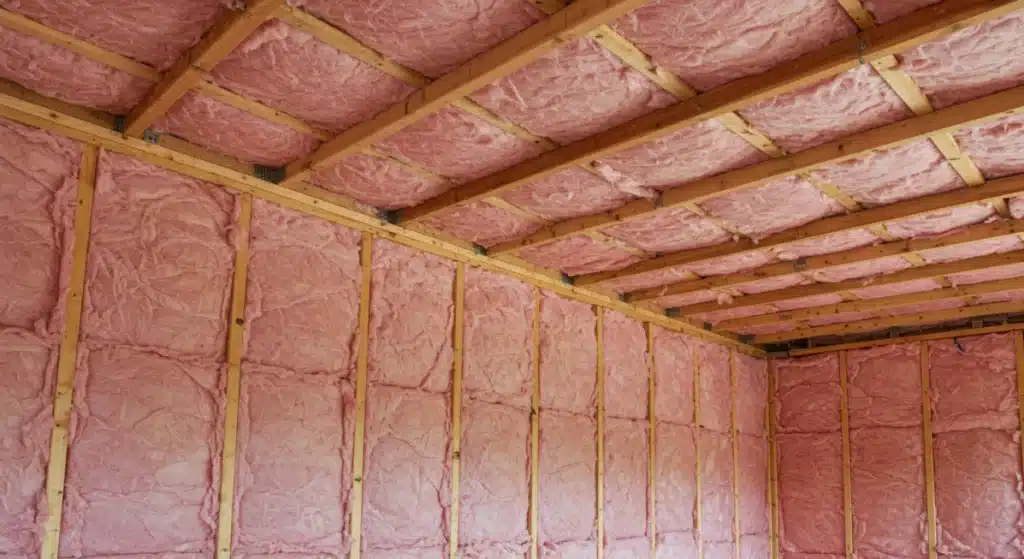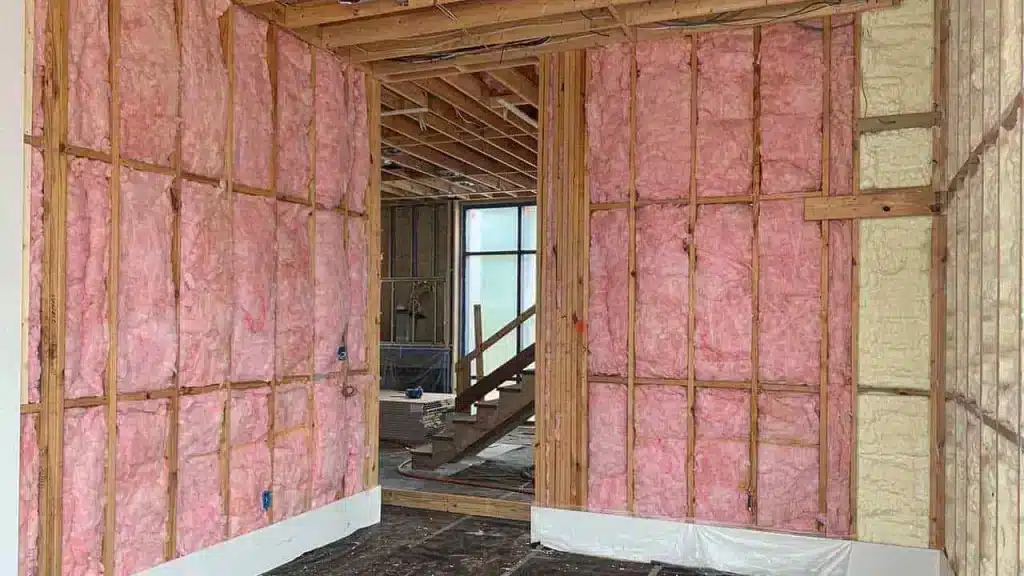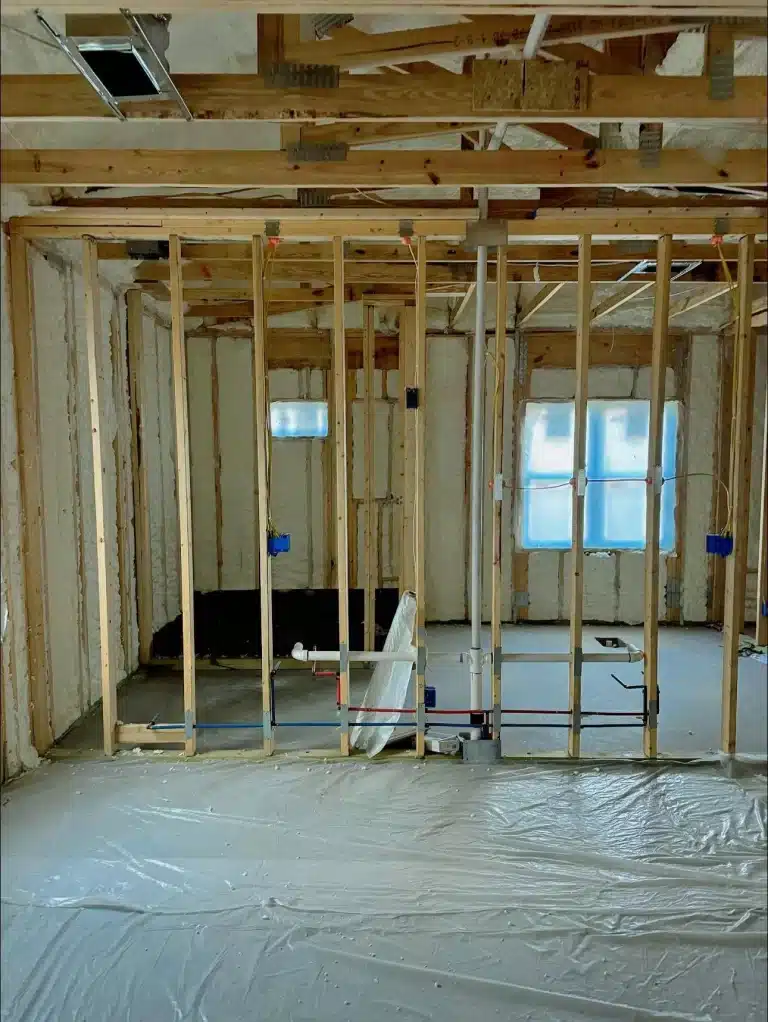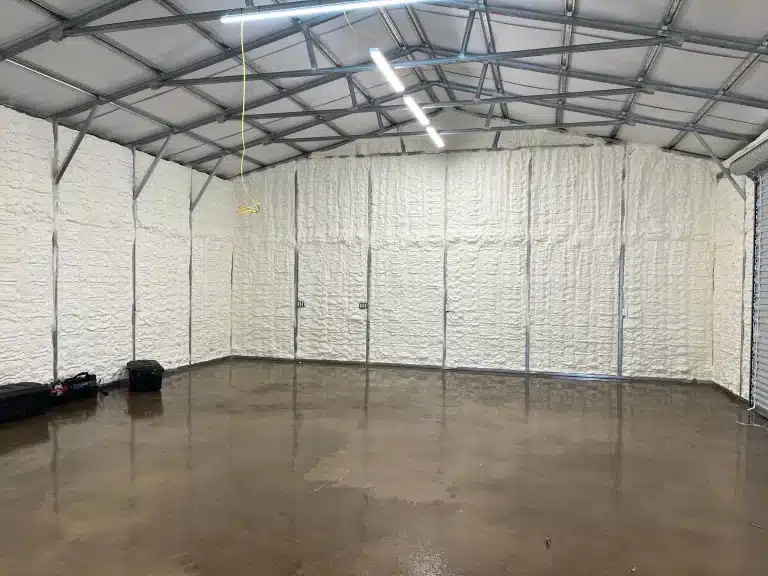For homes in Escambia County, fiberglass insulation remains a common option, but it is no longer the definitive choice for performance or durability. Spray foam insulation has surpassed fiberglass in air sealing and long-term energy efficiency. The humid Gulf Coast climate demands materials that resist moisture, reduce thermal bridging, and perform consistently over time.
Fiberglass may still suit certain retrofit projects or budget-conscious builds. However, in climates like Escambia’s marked by high humidity, temperature swings, and hurricane-prone conditions closed-cell spray foam generally offers better thermal stability, moisture resistance, and structural benefits.
This breakdown explains how fiberglass compares with other insulation types based on firsthand field data and building performance insights. The goal is to clarify when fiberglass works and when better alternatives exist.
Performance Comparison Based on Material Characteristics
| Insulation Type | R-Value per Inch | Air Seal Capability | Moisture Resistance | Mold Resistance | Durability |
|---|---|---|---|---|---|
| Fiberglass Batts | R-2.9 to R-3.8 | Poor | Low | Moderate | Moderate |
| Blown-In Fiberglass | R-2.2 to R-2.7 | Poor | Low | Moderate | Moderate |
| Closed-Cell Spray Foam | R-6.0 to R-7.0 | Excellent | High | High | High |
| Open-Cell Spray Foam | R-3.5 to R-4.0 | Good | Moderate | High | Moderate |
| Cellulose (Loose-Fill) | R-3.2 to R-3.8 | Fair | Moderate | Moderate | Moderate |
Bonus Tip: For unvented attics in Escambia homes, closed-cell spray foam improves HVAC efficiency by insulating the roof deck and reducing thermal drift.
Real-World Application Considerations
Climate Challenges in Escambia
- High Humidity: Fiberglass can trap moisture if not properly vented, leading to reduced performance and mold risk.
- Storm Resilience: Spray foam adds rigidity to roof assemblies, which is beneficial in hurricane-prone zones.
- Temperature Extremes: Air sealing becomes critical for energy savings, where fiberglass alone underperforms.
Bonus Tip: Homes with cathedral ceilings or irregular framing benefit from spray foam due to its ability to fill tight gaps where fiberglass would sag or compress.
Technical Specifications for Common Insulation Materials
| Material | Vapor Barrier Required | Installation Method | Common Use Areas | Lifespan (Years) |
|---|---|---|---|---|
| Fiberglass Batts | Yes | Cut and fit | Walls, attics, floors | 20-30 |
| Closed-Cell Spray Foam | No (acts as vapor barrier) | Spray applied | Roof decks, walls, crawlspaces | 40+ |
| Open-Cell Spray Foam | Sometimes | Spray applied | Interior walls, attics | 20-30 |
| Blown-In Fiberglass | Yes | Blown via machine | Attics, retrofits | 20-30 |
Market Data: According to IBISWorld, spray foam insulation has grown over 3.6% annually since 2018, reflecting increased preference for performance and energy codes (Source: IBISWorld, 2024).

Key Factors to Review Before Choosing Insulation
- Building Age and Framing Type: Older homes with 2×4 framing may benefit from low-profile options like open-cell foam.
- Ventilation Setup: Poorly ventilated attics using fiberglass can see higher humidity loads.
- Energy Code Compliance: Current Florida Building Code (7th Edition) requires higher R-values in new construction.
- Maintenance Tolerance: Fiberglass may require re-leveling or replacement in high-humidity zones.
Most Relevant Services from Prestige Insulation Solutions
- Spray Foam Insulation: Provides superior air sealing and moisture resistance for roofs, walls, and floors.
- Blown-In Insulation: Ideal for attic retrofits where budget and speed are key considerations.
- Insulation Removal: Safe removal of degraded fiberglass prior to upgraded installation.
- Roof Insulation: Application of foam insulation to roof decks to meet or exceed local energy codes.
Common Questions Homeowners Often Ask Before Deciding
How well does fiberglass insulation hold up over time?
Fiberglass tends to settle or sag, especially in humid climates. Moisture exposure can reduce R-value and lead to microbial growth.
Can spray foam be added on top of existing fiberglass?
In some retrofits, spray foam can be applied over fiberglass to improve air sealing, but compatibility and vapor control need professional assessment.
Is fiberglass cheaper than spray foam?
Yes, upfront material costs are lower. However, the long-term energy savings of spray foam often outweigh initial price differences.
Does fiberglass insulation attract pests?
Fiberglass does not attract pests, but it doesn’t deter them either. Spray foam creates a hardened barrier that limits access points.
Final Thoughts
Fiberglass insulation remains functional for certain Escambia applications but often falls short under local climate conditions. Spray foam alternatives offer measurable advantages in performance, lifespan, and resilience against moisture and weather-related risks. Every structure is different, so the choice should align with build type, airflow needs, and long-term maintenance expectations.
Talk to a Specialist Today
Questions about which insulation fits your home best? Contact Prestige Insulation Solutions for an assessment based on real building needs. Reach out at (850) 429-4969 or [email protected] to get expert input grounded in experience and local building standards.
Frequently Asked Questions
What insulation lasts the longest in humid climates?
Closed-cell spray foam outperforms in both durability and moisture resistance. Fiberglass typically degrades faster under sustained humidity.
Can fiberglass insulation meet current Florida energy codes?
Yes, if installed correctly and paired with other materials for air sealing. Still, many builders use spray foam to exceed baseline code requirements.
How often should fiberglass insulation be inspected?
Every 3-5 years for signs of moisture intrusion, mold, or compression. Older homes should undergo more frequent checks.
Can insulation removal damage framing?
With the right removal tools and trained technicians, removal is safe and does not compromise structural integrity.
Which insulation helps reduce noise better?
Open-cell spray foam provides better sound attenuation than fiberglass due to its density and fill characteristics.






